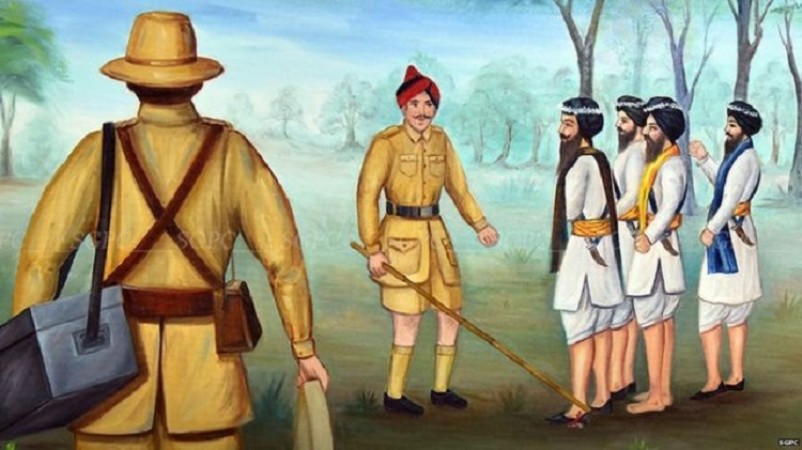
This Day In History: On August 8th, 1922 Sri Amritsar witnessed a historic event that would forever be etched in the annals of Indian history - Morcha Guru ka Bag. This significant gathering brought together thousands of people, united in their quest for justice, equality, and social reform. The sacred city of Amritsar, renowned for its rich Sikh heritage, became the epicenter of a powerful movement that sought to address pressing issues plaguing society and to advocate for the rights of the marginalized.
Background: Guru ka Bag, a serene garden in Amritsar, holds immense religious and historical importance for the Sikh community. It is believed to have been a site visited by Guru Arjan Dev Ji, the fifth Sikh Guru. However, over the years, the garden had fallen into disrepair, and encroachments had threatened its existence. The Sikh community and other concerned citizens, deeply disturbed by this neglect, decided to organize a peaceful Morcha (protest) to reclaim the sanctity of this sacred place.
The Morcha: The Morcha Guru ka Bag, held on August 8, 1922 was meticulously organized, with the primary objective of voicing concerns about the desecration and encroachments on the sacred garden. The organizers sought to draw attention to the pressing need for preservation and restoration of the historic site.
Thousands of Sikhs and people from various walks of life joined hands, demonstrating solidarity for the cause. The participants represented a diverse cross-section of society, including students, professionals, religious leaders, and social activists. The atmosphere was charged with fervor and determination, as the attendees peacefully but assertively conveyed their demands.
The Key Demands- Restoration and Preservation: The foremost demand was the restoration and preservation of Guru ka Bag to its original glory, ensuring that its historical and religious significance were respected and upheld.
Removal of Encroachments: The encroachments that had gradually engulfed the sacred garden were seen as an affront to the Sikh community. Demands were made for the immediate removal of these illegal structures to restore the sanctity of the site.
Government Accountability: The protesters urged the government to take responsibility for the neglect of Guru ka Bag and to ensure its restoration with appropriate funding and resources.
Social Reforms: The Morcha also became a platform to advocate for broader social reforms, including gender equality, education, and healthcare for all citizens.
Peaceful and Symbolic Gestures: The Morcha Guru ka Bag was a remarkable display of peaceful protest and unity. The participants held banners and placards with messages of love, harmony, and justice. There were recitations of Sikh prayers and hymns, emphasizing the importance of spiritual values in the fight for justice.
The protesters engaged in symbolic gestures, like planting trees, as a representation of their commitment to restoring the garden and preserving nature's beauty. This act held a deeper meaning, highlighting the connection between the environment and spirituality.
Impact and Outcome: The Morcha Guru ka Bag was a turning point in the struggle to save the sacred garden. The peaceful protest garnered widespread attention, not only in India but also internationally. The public outcry forced the government to take immediate action and address the demands of the protesters.
As a result, a committee of experts, historians, and community representatives was formed to oversee the restoration of Guru ka Bag. This committee worked in collaboration with the government and civil society to ensure the garden's preservation and to devise plans for its maintenance and protection in the future.
Morcha Guru ka Bag, held on August 8th history, stands as a testament to the power of collective action and peaceful protest. The event exemplified the Sikh values of compassion, justice, and community service. It reminded the world of the importance of preserving cultural heritage and standing up for social justice. The restoration and protection of Guru ka Bag served as a powerful symbol of hope, inspiring people to come together to protect their shared heritage and work towards a more equitable society.